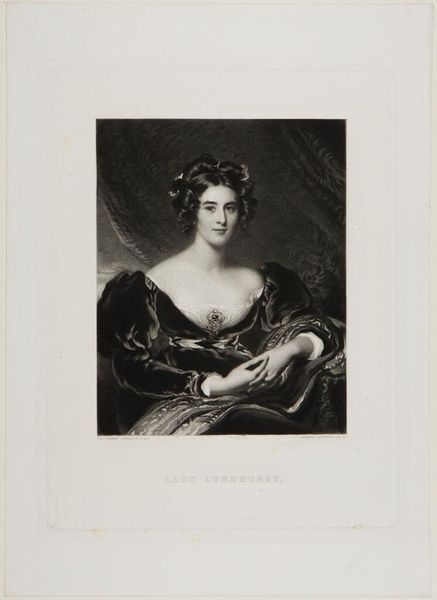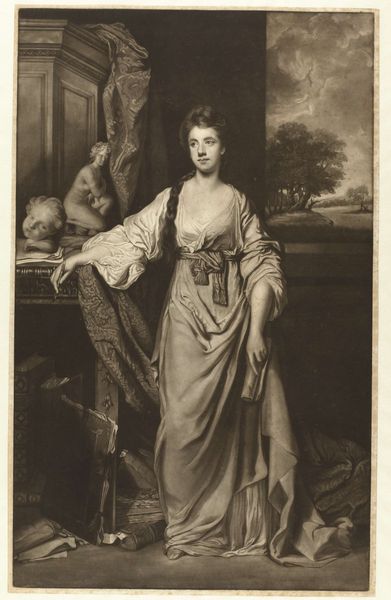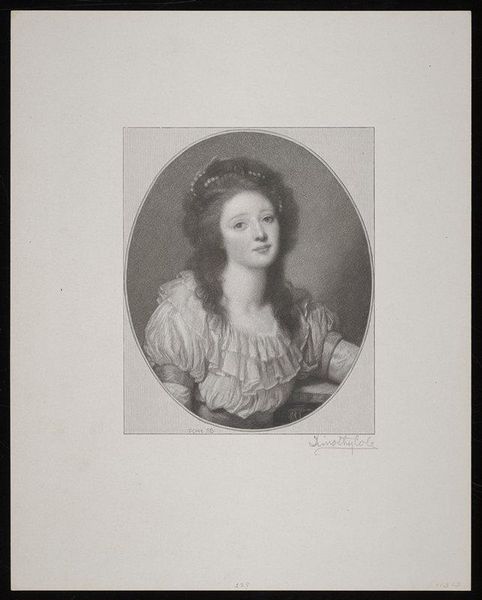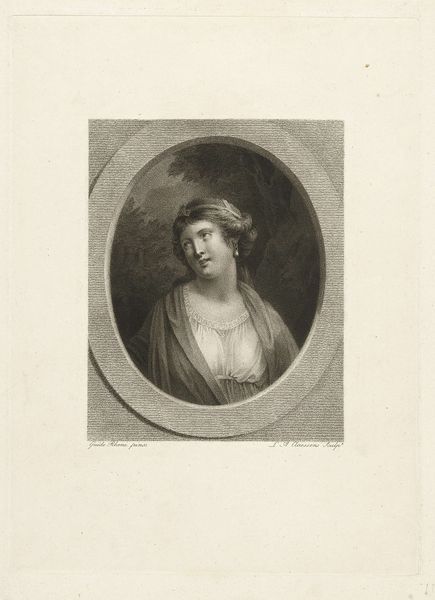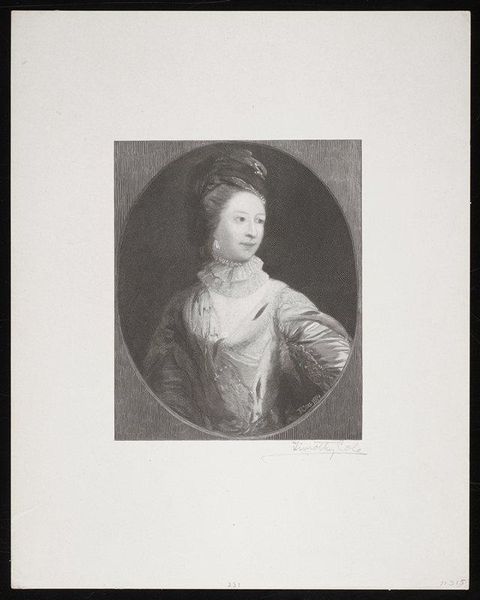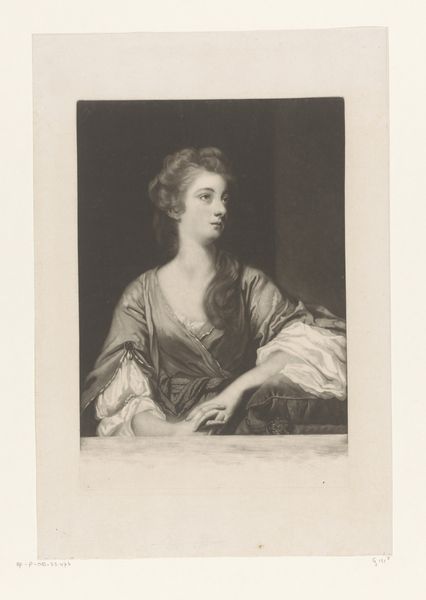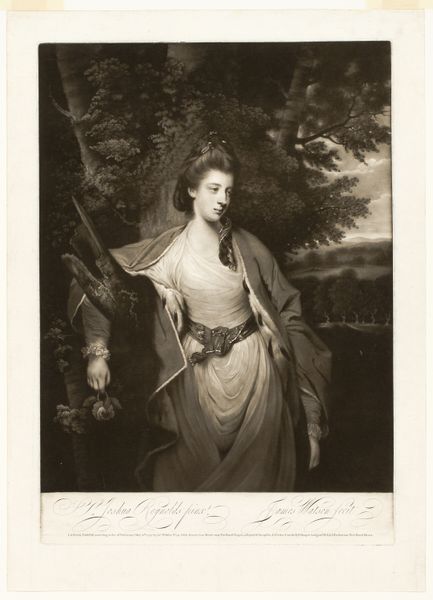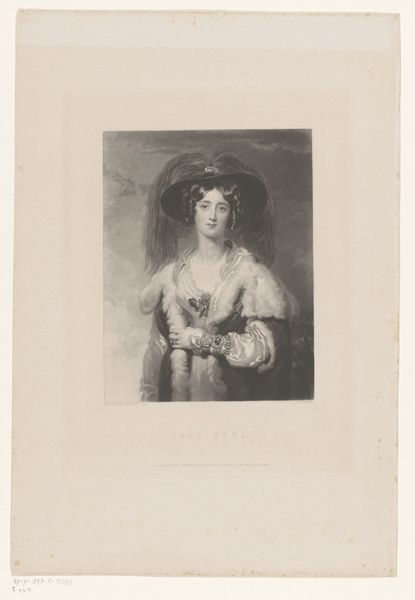
Dimensions: 6 1/2 x 5 5/16 in. (16.51 x 13.49 cm) (image)9 1/2 x 12 in. (24.13 x 30.48 cm) (sheet)
Copyright: No Copyright - United States
Editor: So, this is Timothy Cole's "Mrs. Somerset Davies," created in 1898. It's a wood engraving print. I’m struck by how the image feels both classical and slightly…ghostly, perhaps because of the monochrome palette. What can you tell me about this piece? Curator: Well, placing it within its historical context, we see Cole working within the late 19th-century printmaking revival. Prints became increasingly accessible. How do you think this shift affected the art world and its relationship to the public, especially in relation to portraiture? Editor: It allowed for wider distribution, right? More people could own a version of this artwork even if they couldn't commission or afford an original portrait. Curator: Precisely. It democratized the image, to a degree. This portrait, originally painted by Thomas Gainsborough, was recreated via a wood engraving. Consider how Cole’s role as an engraver shapes his own interpretation. Do you see any particular artistic license he might have taken? Editor: It's very detailed. And while it feels…reproduced, Cole also infused his unique touch to the portrait by translating the textures to print. Curator: Absolutely. Think about the societal expectations imposed on women in portraits during this period, and consider how those ideals might have been perpetuated, or even subtly challenged, through printed reproduction. How do museums impact access today? Editor: I guess museums are another place for folks to experience it directly, albeit still a mediated access with rules and contexts of display to it. Thanks for breaking it down! It gave a great overview! Curator: It's vital to think about what gets amplified in different eras. Reflecting on Cole’s engraving through a historical lens sheds a fascinating light on art, society, and power.
Comments
No comments
Be the first to comment and join the conversation on the ultimate creative platform.

